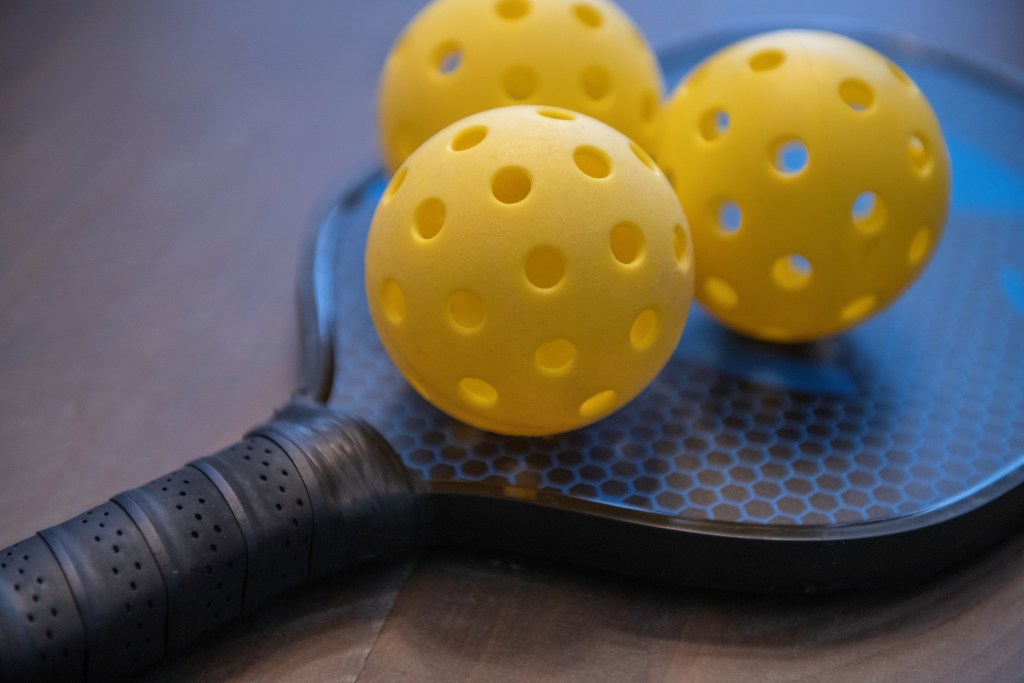It may require diligence to help your kids enjoy sports, such as pickleball.
Generally, when I teach pickleball, I always want to teach people the rules first, but when I teach kids pickleball, I always focus on how to hold the paddle.
Firstly, you should provide yourself with patience because it is difficult to teach kid’s pickleball.

How To Hit The Pickleball Ball
When teaching kids how to play pickleball, you may first try to teach them how to hold the pickleball paddle and hit a pickleball ball.
If your kids range from 2-7 years old, it ma be much easier to teach your 7 year old to hit the pickleball ball than you 2 year old.
That said, once you taught them how to hit the pickleball ball, you want them to practice hitting the pickleball over and over against a backdrop. This allowed them to practice the motion.
After that, you may focus on your kid’s backhanded hits and playing against the net.
Best Pickleball Paddles For Kids
After teaching your kids how to hit the pickleball ball, next you may want to look to research the best pickleball paddle for kids.
Traditionally, kids’ pickleball paddles have a smaller face than an adult pickleball paddle, but I am not sure whether that is actually in the kid’s benefit.
Sure, the smaller paddle may be beneficial in terms of the weight for very small kids, but the larger face actually has a larger sweet spot making the larger paddle potentially more helpful to build the kids confidence.
Once you’ve found the best pickleball paddle for your kids and taught them how to play pickleball, you may be ready to teach your kids the rules.
Teaching The Rules
The rules are obviously important even for kids, so I believe it’s still important to teach kids the rules.
Serving Dynamics:
Serving forms the foundation of every pickleball match, dictating the flow of play and strategic opportunities. Here’s a breakdown of essential serving rules:
- Serving Technique: When executing a serve, your arm should follow an upward arc upon striking the ball. Additionally, your paddle contact must remain below waist level, ensuring fair play and consistent serves.
- Foot Placement: As you serve, ensure that both feet remain behind the baseline, with no contact on the court. This rule maintains fairness and prevents advantageous positioning during serves.
- One Attempt Rule: Unlike some racket sports, pickleball allows only one attempt at a serve. Faulting on your serve results in a loss of serve, emphasizing precision and consistency in your delivery.
- Coin Toss or Paddle Flip: Determining the serving order is crucial. This can be decided through a coin toss or a paddle flip, offering a fair and random method for selecting the initial server.
Serving Sequence:
The serving sequence varies between singles and doubles play, each with its own set of rules:
Doubles Play:
- Both teams have the opportunity to serve and score points, except during the first service sequence of a game where only one player serves.
- The serving team starts from the right side of the court when the score is at 0. After scoring a point, the server switches to the left side for subsequent serves.
- Committing a fault leads to a loss of serve, granting the opposing team the chance to serve.
Singles Play:
- In singles, the server alternates sides based on their score. Serving from the right side occurs when the score is even, while serving from the left side is reserved for odd scores.
Scoring Mechanics:
Understanding scoring is essential for tracking progress and determining the winner of each game:
- Scoring During Serves: Points are only scored while serving, incentivizing players to maintain control and consistency during serves.
- Game Length: Typically, games are played until one player or team reaches 11 points, with a requirement to win by a margin of 2. However, tournament play may extend games to 15 or 21 points for added challenge.
- Serving Side Alignment: Your serving side is determined by your score, with even scores dictating a right-side serve and odd scores indicating a left-side serve.
Gameplay Essentials:
Beyond serving and scoring, several key components shape the gameplay experience:
- Two-Bounce Rule: Players must allow the ball to bounce once on each side of the net before volleying, promoting fair play and strategic shot selection.
- Non-Volley Zone (Kitchen): The area within 7 feet on both sides of the net prohibits volleying, ensuring rallies remain dynamic and engaging.
- Line Calls and Faults: Accurate line calls are vital, with balls deemed “in” if they touch any part of the line. Faults, such as hitting the net, result in points for the opposing team, emphasizing adherence to rules and fair play.
Summing It all Up
Kids enjoy pickleball because it provides an avenue to connect with their parents and has an easier learning curve than other sports.
That said, the best way to teach your kids pickleball may include teaching how to hit the ball, purchasing a great kids pickleball paddle, and teaching the rules

Leave A Comment